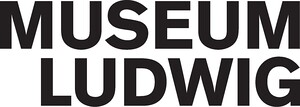HERE AND NOW at Museum Ludwig
November 13, 2021–February 13, 2022
Heinrich-Böll-Platz
50667 Cologne
Germany
Hours: Tuesday–Sunday 10am–6pm
T +49 221 22126165
info@museum-ludwig.de
Facebook / Twitter / Instagram / Vimeo / #HIERUNDJETZT / #HEREANDNOW / #dafuerunddagegen
Artists: Chim↑Pom, Koki Tanaka. With photographs by Minoru Hirata from the M+ collection: Performances by the artist collectives Hi Red Center, Sightseeing Art Research Institute, Kurohata, Zero Dimension, and the artists Ushio Shinohara and Kanji Itoi (1963–1969)
With the exhibition together for and against it, the Museum Ludwig is focusing on positions of contemporary art in Japan and their historical predecessors. A starting point is the consideration of the Japanese avant-garde in the 1960s from today’s perspectives. What developments in the post-war period did artists react to at the time? What motivated their sensational public performances? What moves the artist collective Chim↑Pom and the artist Koki Tanaka today, and how do they relate to this historical movement?
A loan of historical photographs by Minoru Hirata is the point of departure for the seventh exhibition in the project series HERE AND NOW at Museum Ludwig. These come from the collection of M+ in Hong Kong, which has been a partner museum of the Museum Ludwig since 2018. Director Yilmaz Dziewior: “I’m delighted that this exhibition shows the current relevance and urgency of the concerns of the Japanese avant-garde in the 1960s by juxtaposing it with more recent works by Kōki Tanaka and Chim↑Pom extending up to the present day. Furthermore, the Museum Ludwig has succeeded in expanding its breadth of artistic positions by focusing on advanced art in historical and present-day Japan, for which I am very grateful to everyone involved.”
The Japanese avant-garde of the post-war period emerged after the occupation by the United States military (1945 to 1952) and is closely linked to the economic and social reorientation of Japan during this period. The democratization of the country under the financial and political influence of the United States brought with it great economic growth, social changes, and cultural shifts. The close ties between Japan and the United States are evident in the two security treaties signed in 1960 and 1970. Among other things, they included the stationing of the United States military in Japan, which was met with major protests especially by students and unions. The police responded with brutal violence. In the same decade, Japan prepared for the 1964 Olympics in Tokyo and Expo ’70 in Osaka in order to present the country in an innovative and attractive light.
Young artists, including members of the Neo Dada, Hi Red Center, and Zero Dimension collectives, reacted to the social changes of the 1960s with high-profile performances in major cities such as Tokyo, Nagoya, and Kyoto. Their provocative performances manifested protests against historically growing problems, since the consequences of the war were far-reaching: the stationing of the United States military in Japan, discrimination against migrants, and the injustices of a class-based society. The artists brought these injustices to light and advocated for democratization. The historical photographs from M+ document the performances of various artist collectives in the 1960s.
These are juxtaposed with two contemporary positions. The six-member artist collective Chim↑Pom, founded in Tokyo in 2005, will offer a humorous intervention. Their performances often take place outside of institutional settings. In their ironic and radical activities, the six artists take a stand on current social and political issues and criticize the taboo on the dangers of nuclear power, poverty, and other social imbalances in Japan. Under the title Double Stories of Museum Ludwig, the collective is developing a multi-part work in Cologne which enables various processes of exchange between interior and exterior spaces. Street musicians who were spontaneously approached will give a concert at the Museum Ludwig. Motifs from Hans Haacke’s The Chocolate Master (1981) from the collection of the Museum Ludwig can be found on the packaging of Turkish sweets in the pastry shop Hasan Özdağ on Keupstrasse in Mülheim. Five players from FC Köln (women’s soccer team) will also leave impressions of soccer balls in the exhibition space.
In contrast to the interactive projects developed on site by Chim↑Pom, the artist Koki Tanaka (*1975 in Tochigi) has been planning his works for a long time. He deliberately brings people of different generations and backgrounds together. Tanaka often documents and processes these collaborative interactions in the form of photo and video installations. Since even before the Fukushima nuclear disaster, his work has revolved around the behavior of communities in exceptional situations. How do people develop potentials of resistance by abandoning their usual routines? The video installation Abstracted/Family (2019/2020) deals with the history of Japanese migration and everyday racism in Japan. Four protagonists from Japan whose families come from Bangladesh, Brazil, Bolivia, and the Korean peninsula process their traumatic experiences together.
The exhibition was developed by Nana Tazuke-Steiniger as part of her fellowship Forschungsvolontariat Kunstmuseen NRW organized by the state of North Rhine-Westphalia. Six young academics from North Rhine-Westphalia came together and founded an initiative on the topic of “museum of the future.” A manifesto by the initiative will be published in the exhibition, detailing their vision for the future as well as the challenges facing museums. This will also be published in the exhibition catalogue, which will be released at the end of the exhibition.
The exhibition received substantial support from the HERE AND NOW group of members of the Gesellschaft für Moderne Kunst am Museum Ludwig e.V. and the Storch Foundation. Additional funding came from Russmedia and the Pola Art Foundation in Tokyo.

